The diagram of the stomach
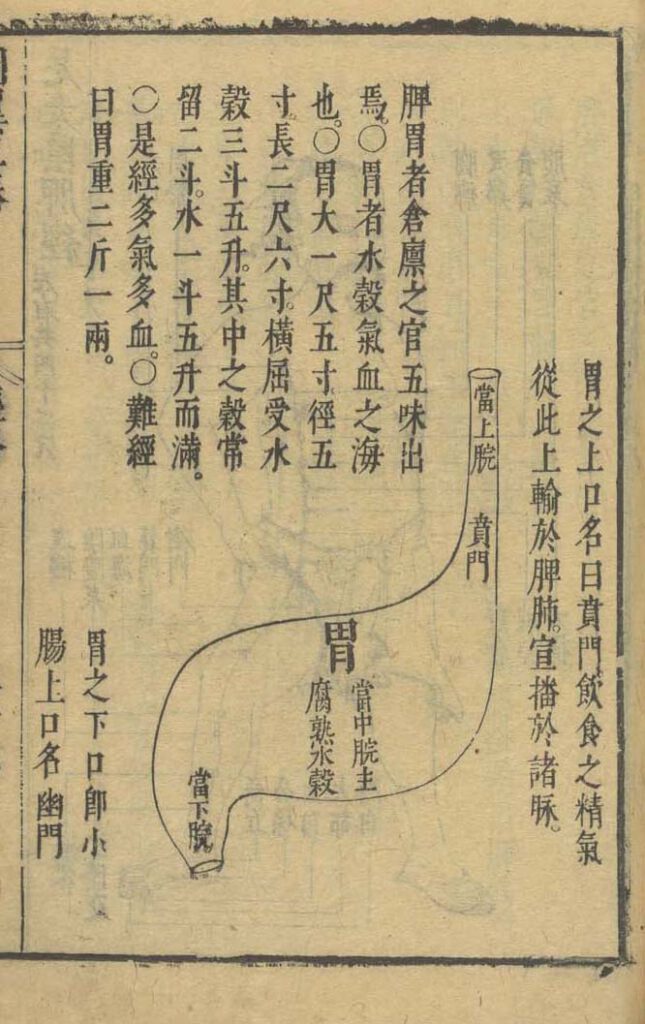
The diagram of the stomach from Zhang Jiebin (1563-1640), Illustrated Wing of the “Classified Canon” (Leijing tuyi), woodblock edition, preface dated 1624 From the collection of the Harvard-Yenching Library, Harvard University – This image of the stomach accompanies Zhang’s illustration of the pathway of the Foot Yang Brightness Stomach Channel. The upper text begins with […]
The hand lesser yin heart channel

The hand lesser yin heart channel (two facing pages) from Zhang Jiebin (1563-1640), Illustrated Wing of the “Classified Canon” (Leijing tuyi), woodblock edition, preface dated 1624. From the collection of the Harvard-Yenching Library, Harvard University – In writings on acupuncture, it became common to pair an image of an internal organ with an image of […]
Diagram of the Inner Landscape
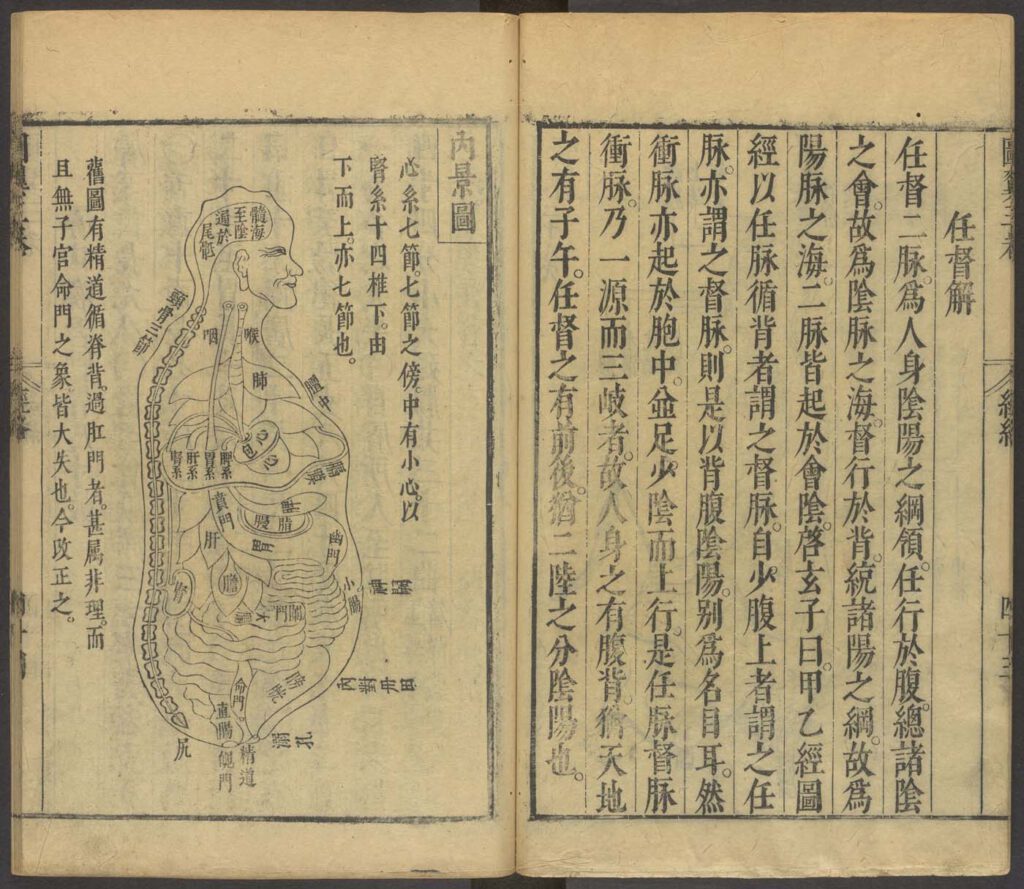
Diagram of the inner landscape from Zhang Jiebin (1563-1640), Illustrated Wing of the “Classified Canon” (Leijing tuyi), woodblock edition, preface dated 1624. From the collection of the Harvard-Yenching Library, Harvard University – In his magnum opus, The Classified Canon (Leijing), the physician Zhang Jiebin reorganized the contents of the Yellow Emperor’s Inner Canon by topic. […]
A segment of a Mayan hieroglyphic text, highlighting the stylised glyph for ‘heart’

A segment of a Maya hieroglyphic text with a stylised glyph for ‘heart’ Site: Palenque Culture: Maya Date: Late Classic (c. AD 683) Context: Temple of the Inscriptions, West Panel, A7-A8 Medium: Carved limestone monument Figure credit: Drawing by Christophe Helmke – Much as with other Mesoamerican cultures, the Maya viewed the heart as the […]
A depiction of a man being attacked and mauled by a jaguar
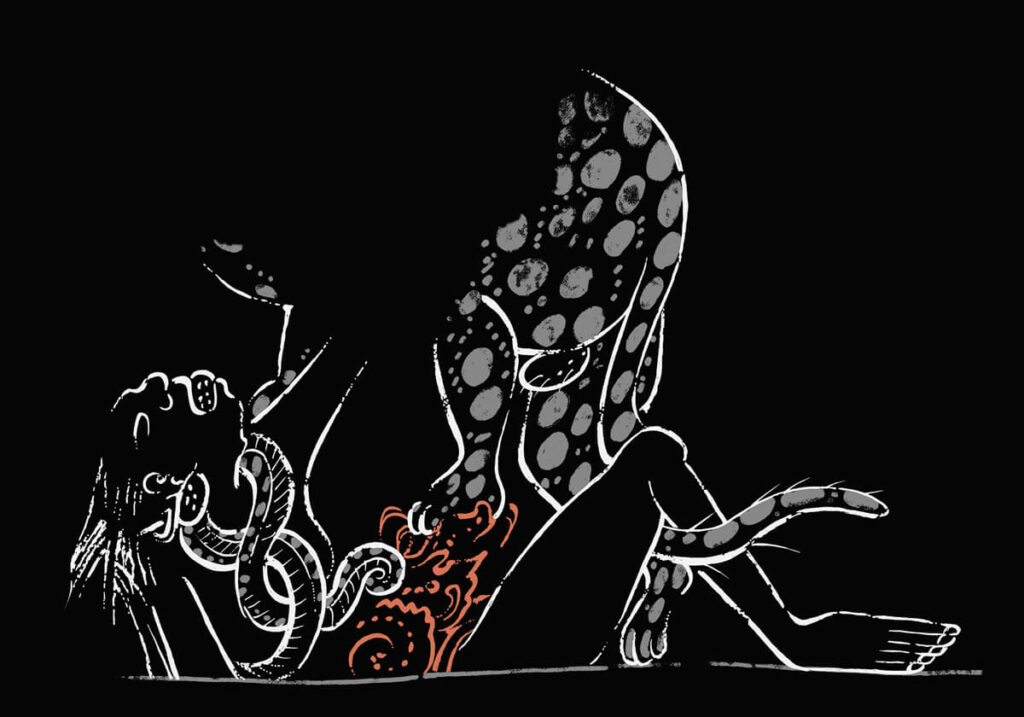
A depiction of a man being attacked and mauled by a jaguar, as his entrails flow from the severed abdomen Site: Greater Calakmul area Culture: Maya Date: Late Classic (AD 650-750) Context: Vase BOD32 Medium: Codex-style painted ceramic vase Figure credit: Drawing by Christophe Helmke – In the detail of this intricately painted Maya vase, […]
Late Classic altar at the site of Xunantunich
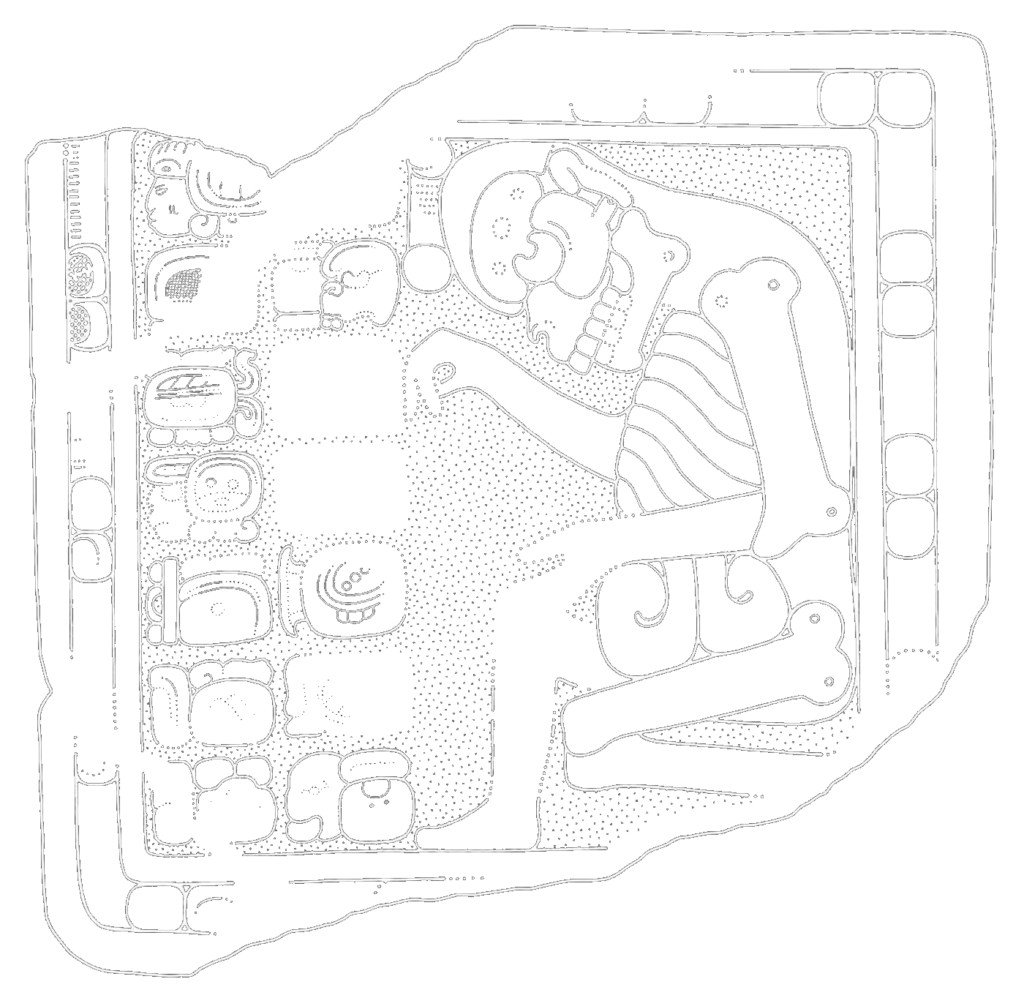
Late Classic altar at the site of Xunantunich, depicting a skeletal figure with its putrid guts flowing from the ribcage Site: Xunantunich Culture: Maya Date: Late Classic (AD 849) Context: Altar 1 Medium: Carved stone monument Figure credit: Drawing by Christophe Helmke – This altar depicts a skeletal figure, crouching to fit into the surrounding […]
Battle scene and their aftermath
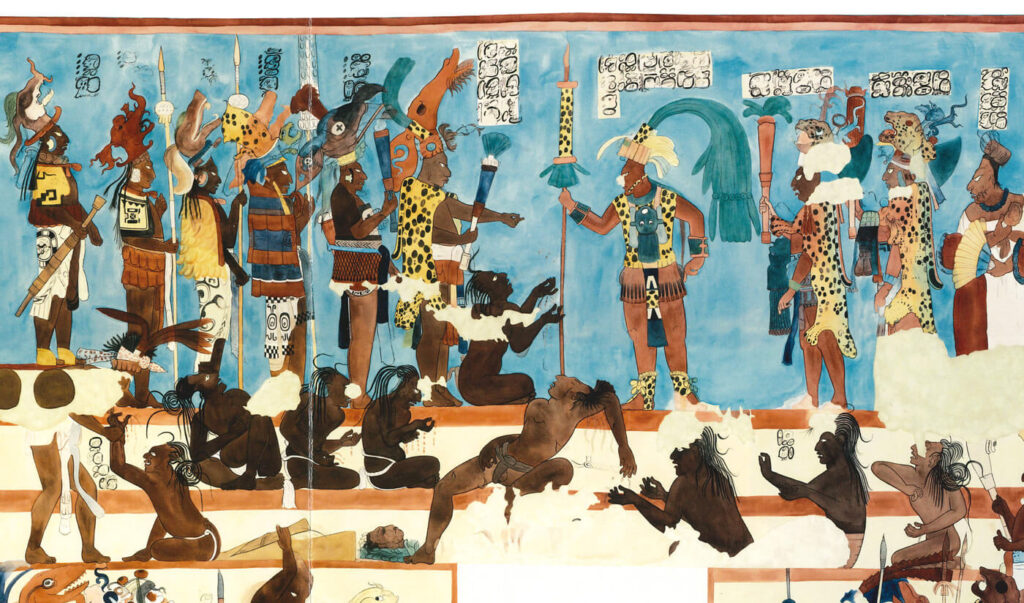
Battle scene and their aftermath, in the murals of Bonampak illustrating the mutilation of defeated warriors Site: Bonampak Culture: Maya Date: Late Classic (c. AD 800) Context: Structure 1, Room 2 Medium: Mural Figure credit: Watercolour by Heather Hurst and Leonard Ashby – In this amazingly detailed and colourful mural, we get a spectacular look […]
Mythic battle between a crocodilian creature
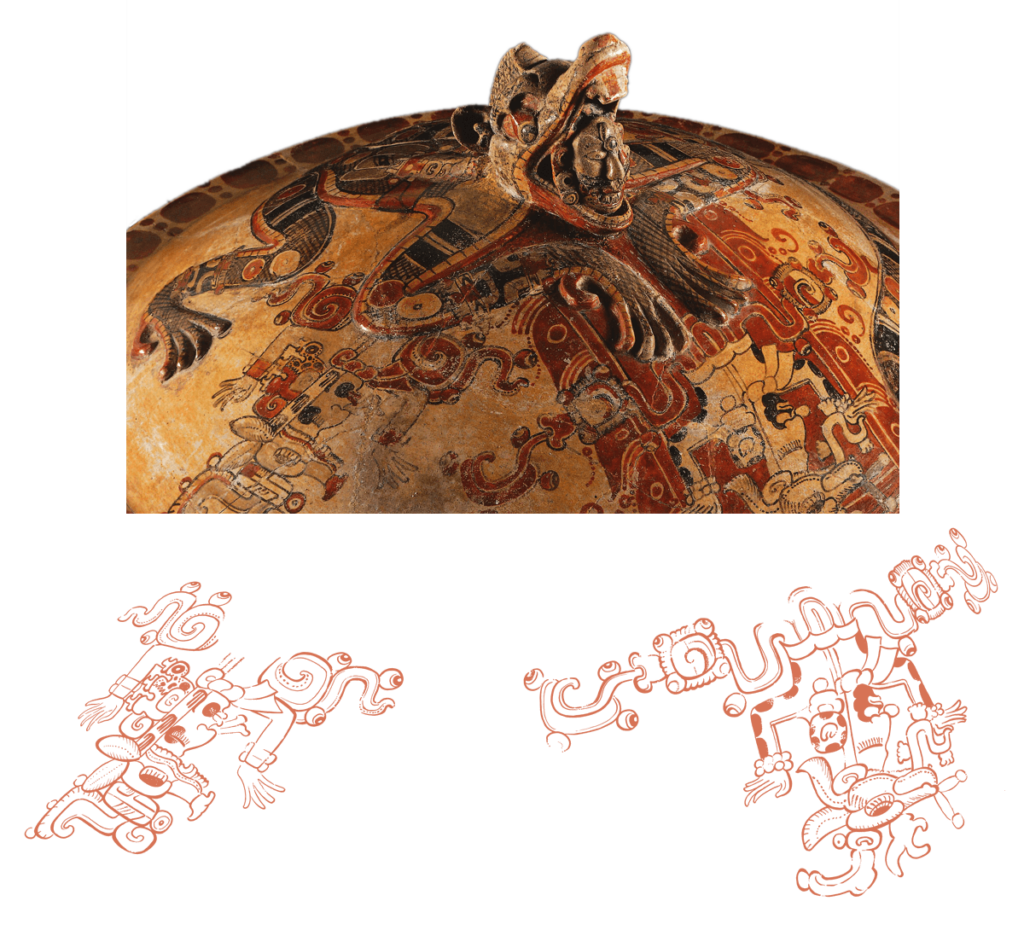
Mythic battle between a crocodilian creature and with the entrails spilling out of the defeated humans Site: Becan Culture: Maya Date: Early Classic (c. AD 250-400) Context: Structure 9 Medium: Polychromatically painted ceramic vessel Figure credit: Drawing by Christophe Helmke. Photograph by Jorge Pérez de Lara – The setting is a mythic battle in primordial […]
Stylized heart rendered in sheet gold

Stylized heart rendered in sheet gold, found in an offering at the Aztec capital Tenochtitlan Site: Tenochtitlan Culture: Aztec Date: Late Postclassic (c. AD 1486-1502) Context: Templo Mayor, Offering 167 Medium: Cold-hammer gold with incisions Figure credit: Photograph by Jorge Pérez de Lara / M. Islas – The heart occupied a privileged place in Aztec […]
Depiction of an eagle devouring a human heart at the site of Tula
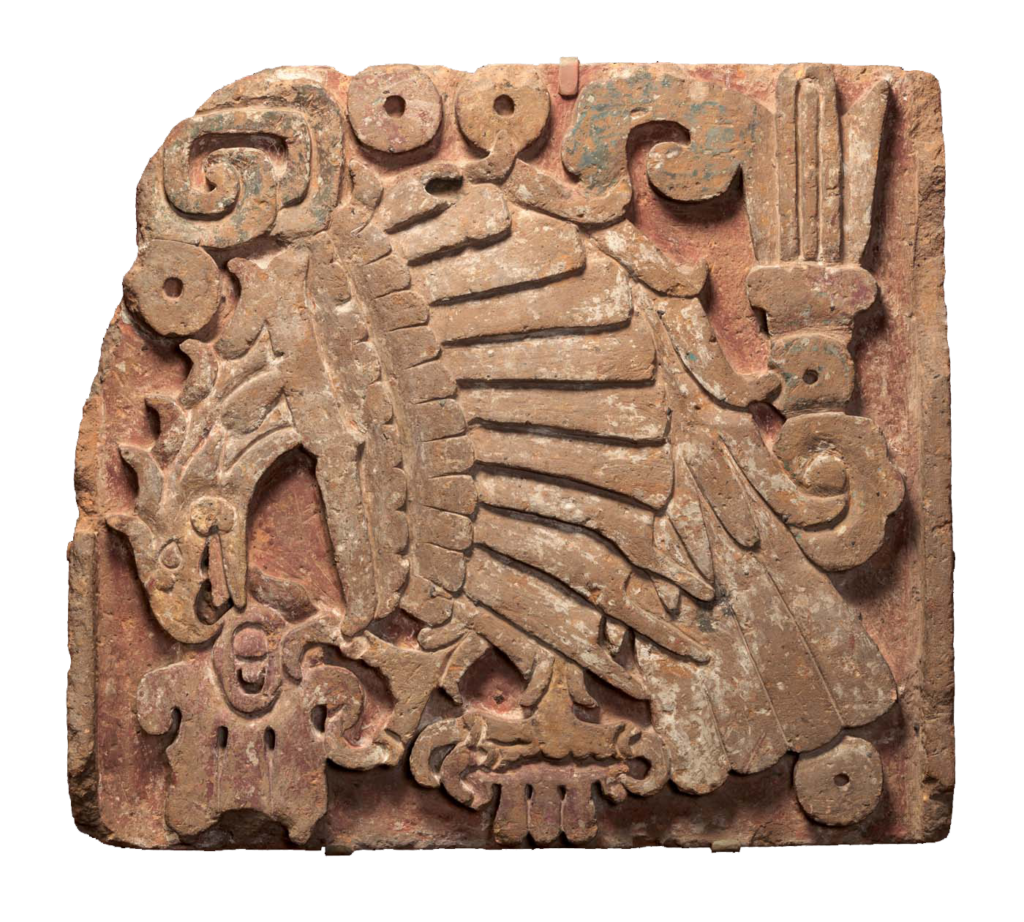
Depiction of an eagle devouring a human heart at the site of Tula Site: Tula Culture: Toltec Date: Early Postclassic (c. AD 900-1200) Context: Pyramid B Medium: Stone relief Figure credit: Photograph by Zeray Peter – Ornamenting the sides of the imposing Pyramid B at Tula, a wide range of felines, coyotes, and eagles are […]
